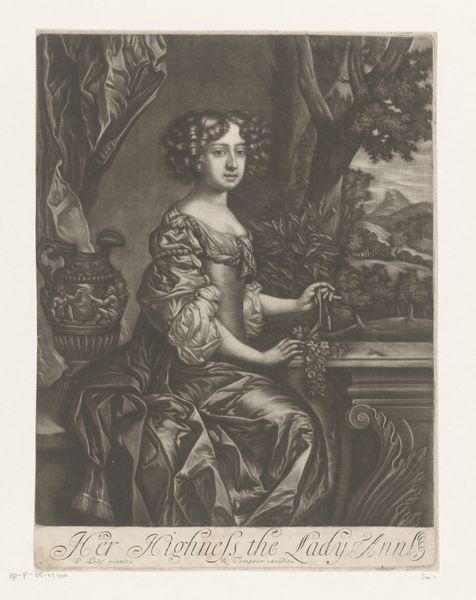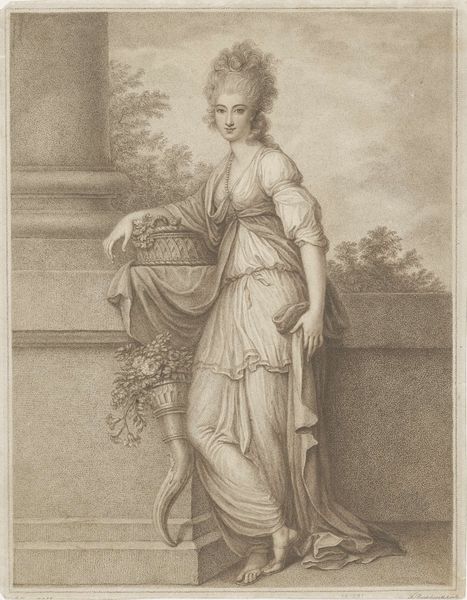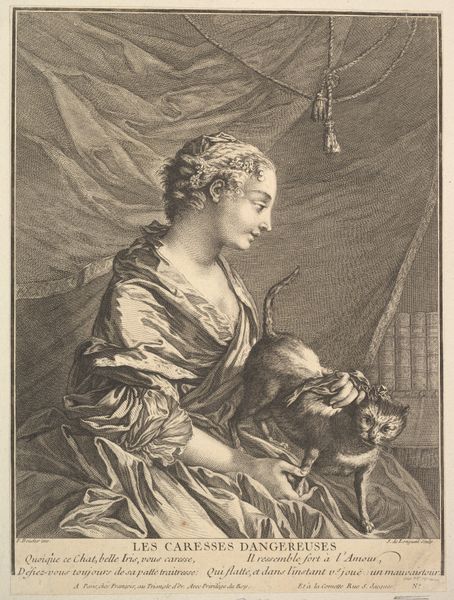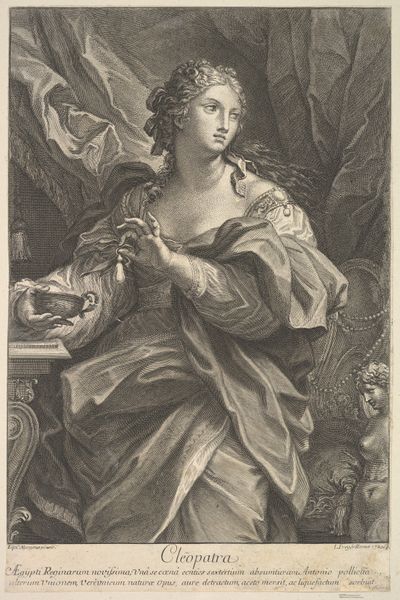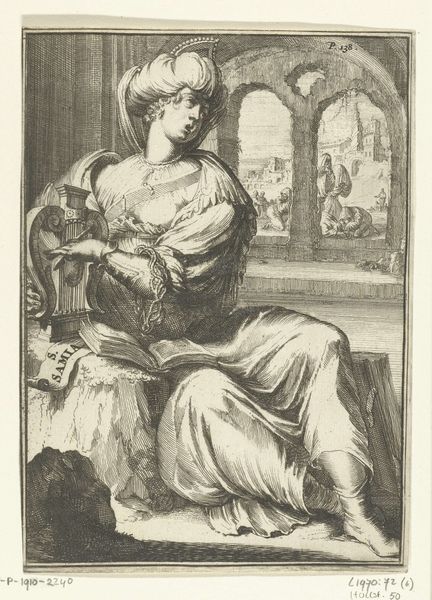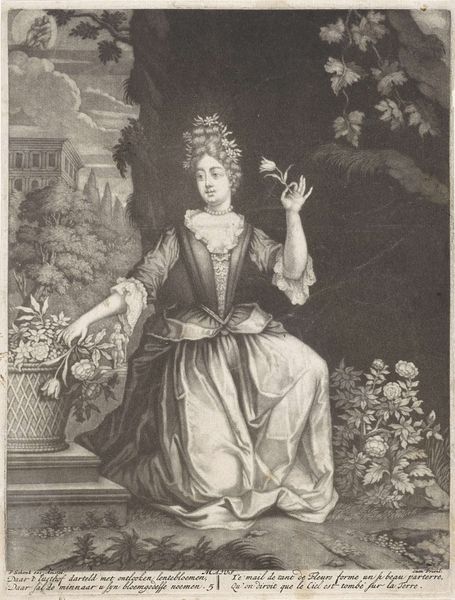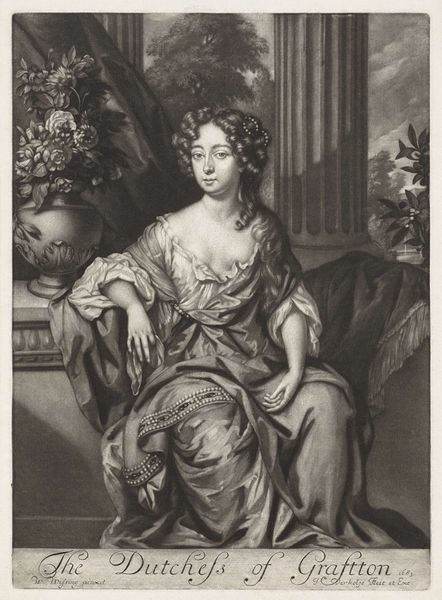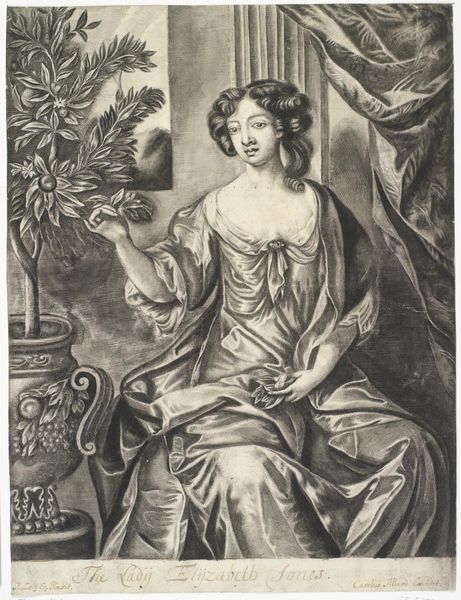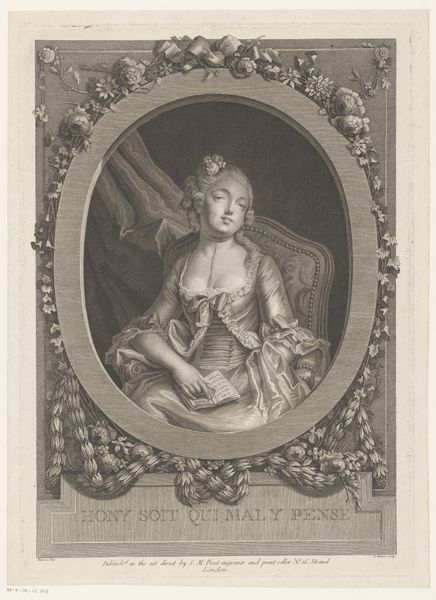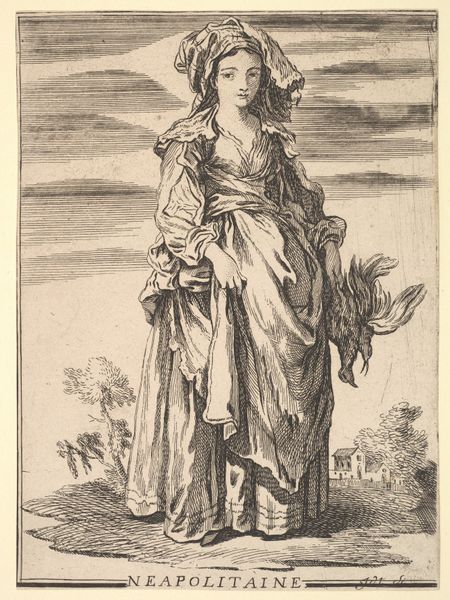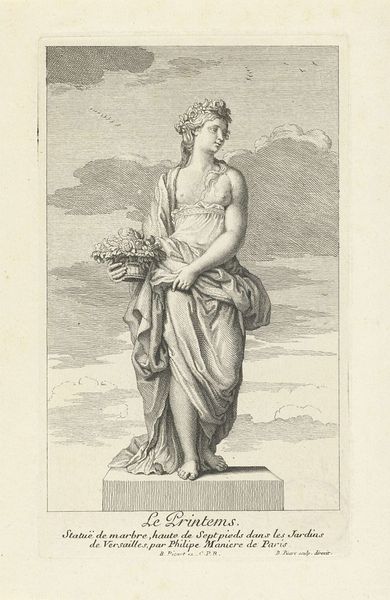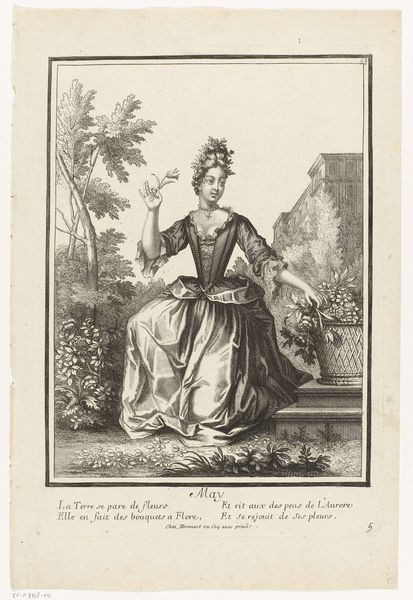
engraving
#
portrait
#
allegory
#
baroque
#
old engraving style
#
caricature
#
personal sketchbook
#
portrait drawing
#
history-painting
#
engraving
Dimensions: height 351 mm, width 261 mm
Copyright: Rijks Museum: Open Domain
Curator: Allow me to introduce "Ceres," an engraving created sometime between 1663 and 1684. Editor: My immediate impression is one of abundance tempered by melancholy. The cornucopia overflowing with produce juxtaposed with her downcast gaze... It's quite striking. Curator: Indeed. Notice how the engraver utilizes varied line weights to create tonal contrast and suggest volume, especially in the rendering of the fabrics. It is an adept piece of image-making. Editor: The column provides an interesting framing device. Columns in art frequently symbolize stability and fortitude. Given Ceres' role as the goddess of agriculture, perhaps it represents the foundation upon which society is built. I do note though the rather crude, almost caricaturist style in her face, perhaps even intentionally contrasting from the column. Curator: I would suggest that is related more to the quality of the work than artistic direction. Regardless, her melancholic expression is effectively created by using shadows to sculpt her face in a particularly compelling manner. Note that with the slight hatching technique around the mouth, we get both volume and emotional weight in the image. Editor: Speaking of her expression, while downcast, it avoids despair. The fruit she holds out is vibrant, literally overflowing with life. The fruit becomes an ancient symbol for prosperity and continuity—the promise of sustenance regardless of Ceres' own emotional state. This almost presents it in stark contrast. Curator: Interesting you focus on that thematic concern; I note especially that this is balanced effectively with the pillar in the background. With an expert eye the work has used shape, depth, and dark tone against lighter colors to give a clear image—we never mistake what this represents because the material structure is present so well. Editor: It creates an interesting tension. The image reminds us that nature's bounty persists, offering hope even when individual emotions may be more complicated. The piece encapsulates both the giving nature and underlying pain of existence itself. It gives you food for thought. Curator: Agreed. This exploration of both form and emotional register renders this example of engraving compelling beyond its historical context. We see how skillfully an allegory can still resonate despite temporal gaps and lack of direct cultural cues, when presented correctly.
Comments
No comments
Be the first to comment and join the conversation on the ultimate creative platform.
